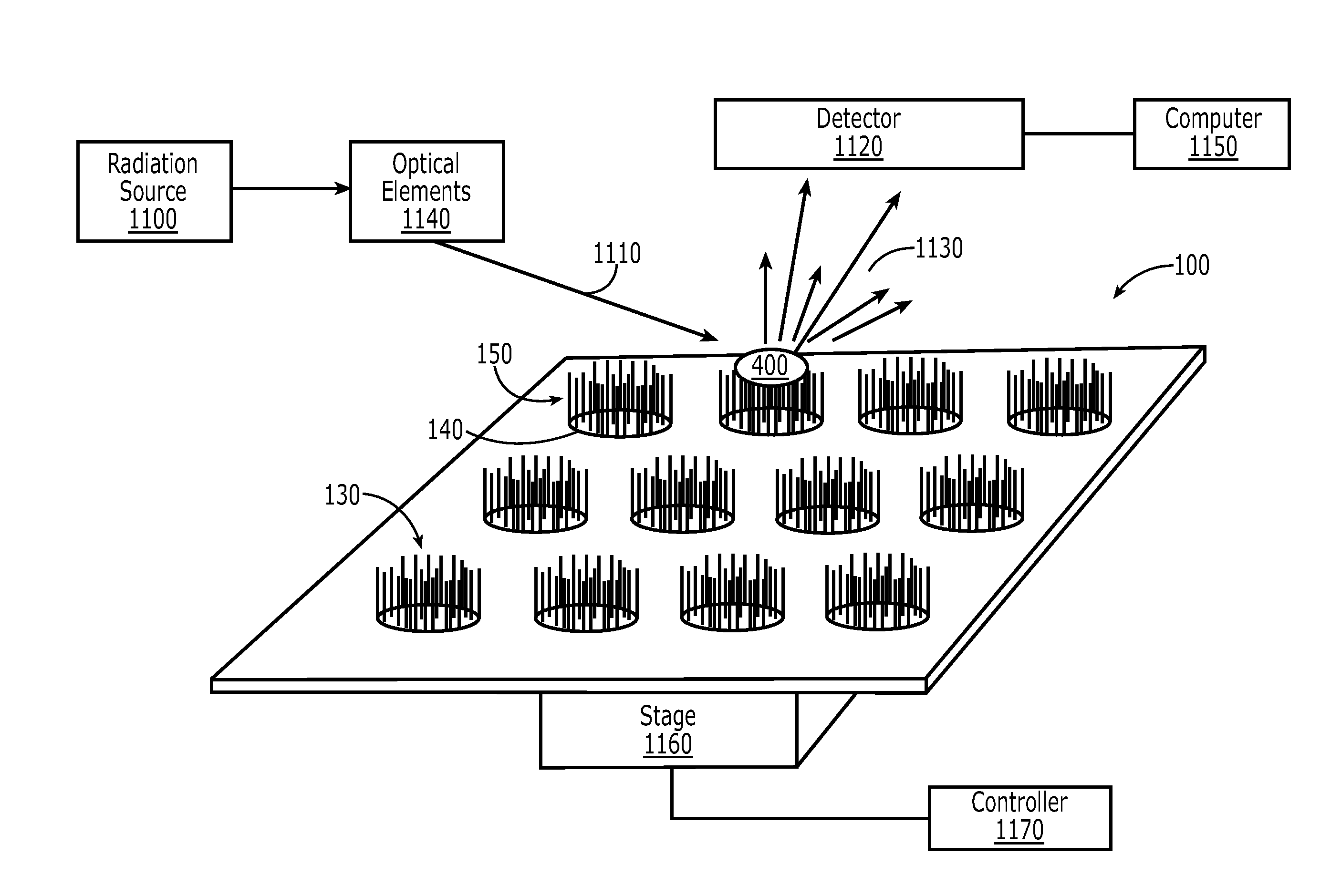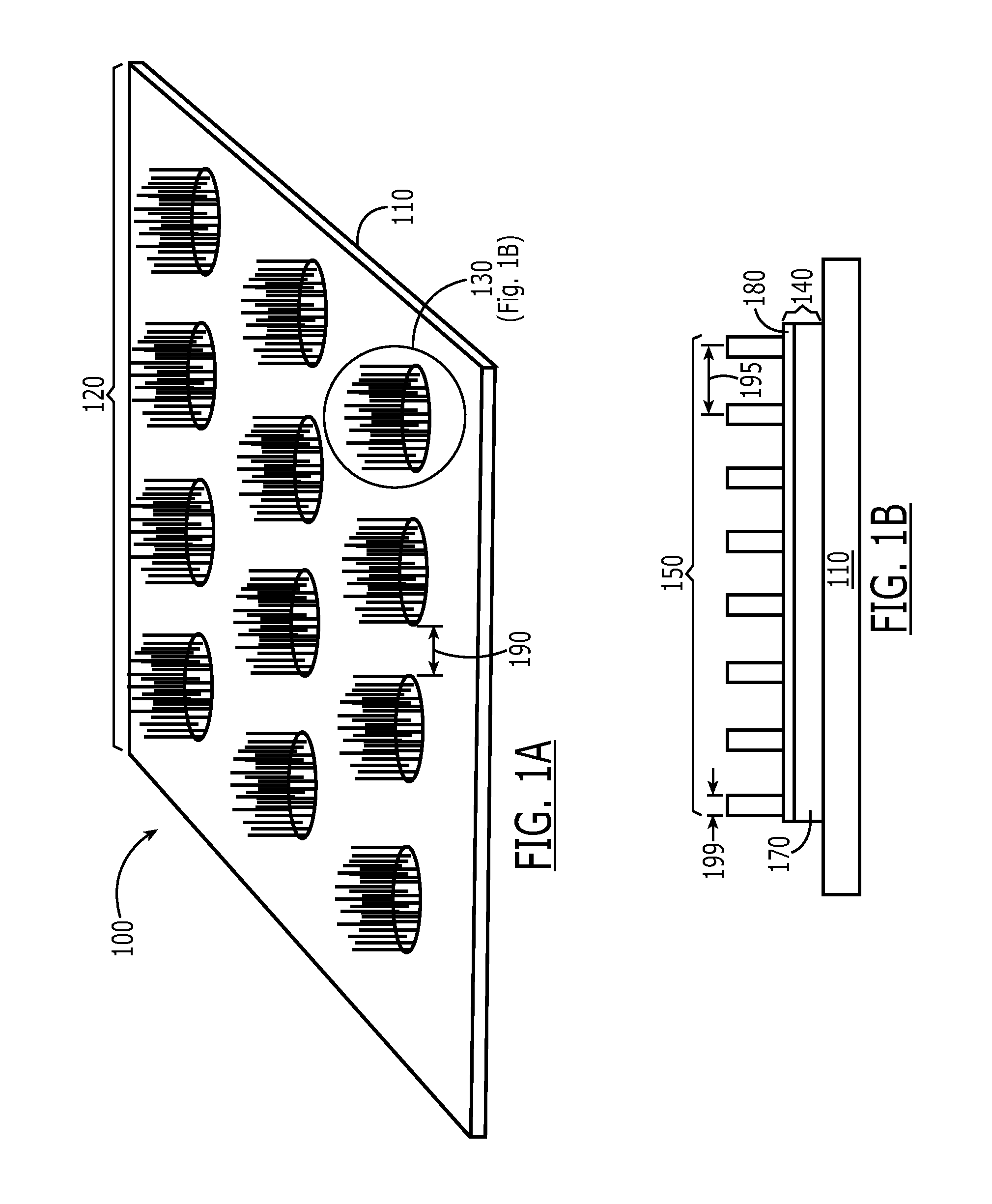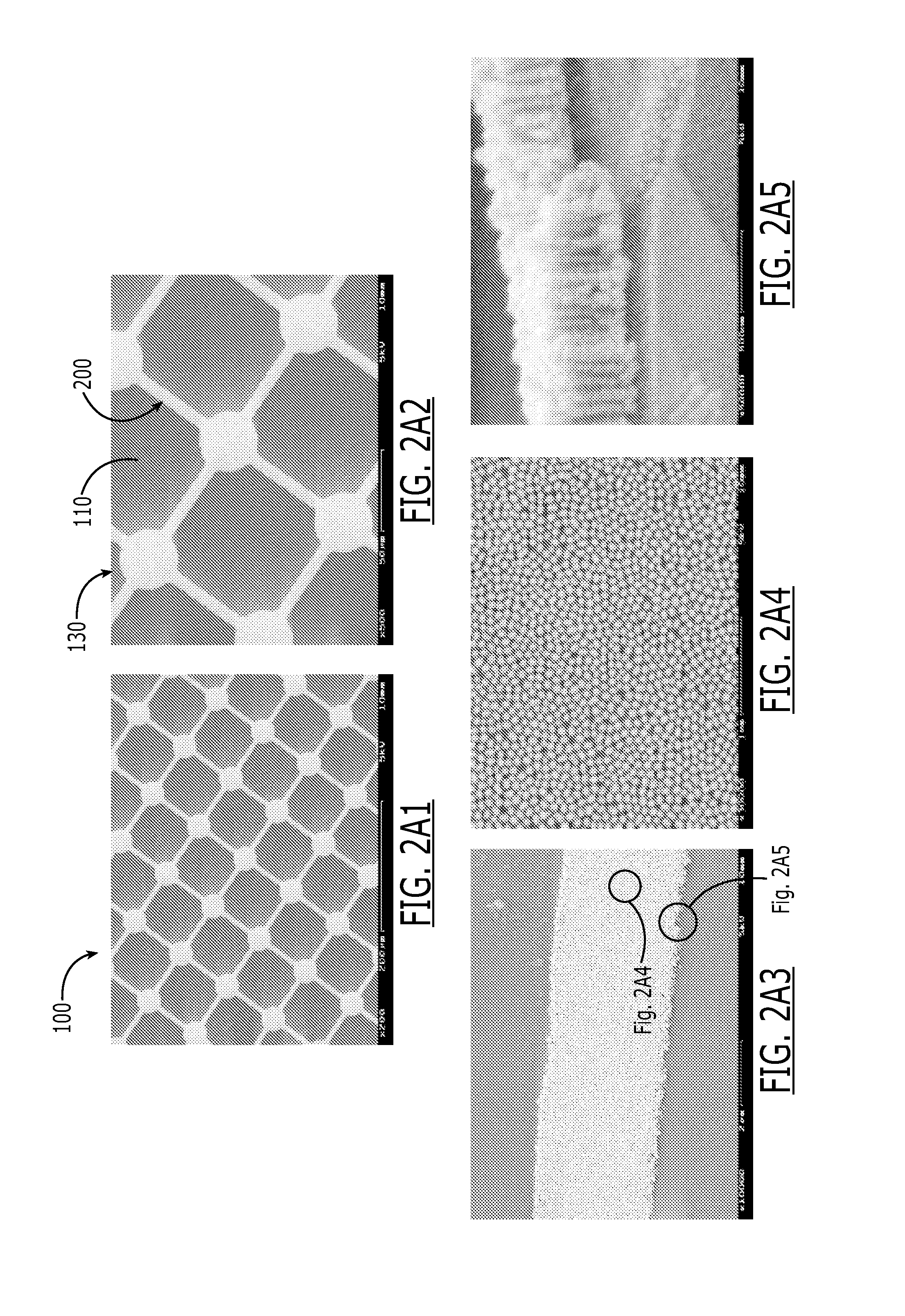Nanostructured substrates for surface enhanced raman spectroscopy (SERS) and detection of biological and chemical analytes by electrical double layer (EDL) capacitance
a technology of electrical double layer and nanostructure, applied in the field of nanostructured substrates for surface enhanced raman spectroscopy and detection of biological and chemical analytes by electrical double layer (edl) capacitance, can solve the problems of inability to achieve a large number of hot spots, inability to achieve significant progress toward detailed understanding of edl structure, and inability to utilize this phenomenon for practical applications. to achieve the effect of enhancing the radiation scattered by the analy
- Summary
- Abstract
- Description
- Claims
- Application Information
AI Technical Summary
Benefits of technology
Problems solved by technology
Method used
Image
Examples
example
[0117]Provided below is an example of a method for forming a nanostructured surface according to an embodiment of the invention:[0118]Step 1: Sample preparation: A silicon wafer or a glass slide is cleaned and then coated with a thin layer of titanium (10 nm) followed by a layer of gold (5-10 nm) and a thick layer of aluminum (1.5 μm) using an e-beam evaporator. The Al layer is then electropolished in a 9:1 ethanol to water solution to remove to remove any oxide layer prior to anodization. See FIG. 5A.[0119]Step 2: Anodization: Anodization in 0.3 M oxalic acid at 5° C. at 40 V is performed until it reaches the gold layer through the monitoring of the anodization current. See FIG. 5B.[0120]Step 3: Electrodeposition: Silver nanopillars are formed through electrodeposition into the nanopores in a silver potassium cyanide bath at 5 mA / cm2 for 50 s. See FIG. 5C.[0121]Step 4: Alumina removal: The alumina template is removed by dipping in 2.0M NaOH solution for about 20 minutes. See FIG. 5...
PUM
| Property | Measurement | Unit |
|---|---|---|
| inter-island distance | aaaaa | aaaaa |
| width | aaaaa | aaaaa |
| distance | aaaaa | aaaaa |
Abstract
Description
Claims
Application Information
 Login to View More
Login to View More - R&D
- Intellectual Property
- Life Sciences
- Materials
- Tech Scout
- Unparalleled Data Quality
- Higher Quality Content
- 60% Fewer Hallucinations
Browse by: Latest US Patents, China's latest patents, Technical Efficacy Thesaurus, Application Domain, Technology Topic, Popular Technical Reports.
© 2025 PatSnap. All rights reserved.Legal|Privacy policy|Modern Slavery Act Transparency Statement|Sitemap|About US| Contact US: help@patsnap.com



